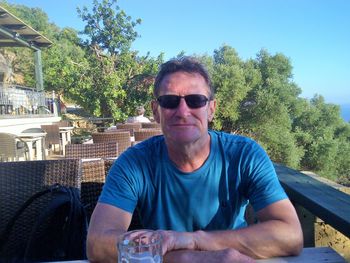Graeme Waterhouse Lithics Collection
Keith Boughey, 2020. https://doi.org/10.5284/1062880. How to cite using this DOI
Data copyright © Keith Boughey unless otherwise stated
This work is licensed under a Creative Commons Attribution 4.0 International License.
Primary contact
Keith
Boughey
Church Bank
Church Hill
Hall Cliffe
Baildon, W. Yorks
BD17 6NE
Resource identifiers
- ADS Collection: 3527
- DOI:https://doi.org/10.5284/1062880
- How to cite using this DOI
Introduction

Graeme Waterhouse was born in 1954 and spent most of his life in Keighley. He is married to Marion and has two children, Mark and Fiona, and two grandchildren. Having left Portsmouth Polytechnic with a degree in Geography he worked firstly for Ladbrokes before joining the Department for Employment in 1978. He qualified as an accountant and finally headed up an audit team in the Department for Work and Pensions. He retired in March 2016 and now lives in Long Preston near Settle.
Other than collecting flints his interests include sport, listening to music, gardening, walking with friends and his dog, family holidays, and he and his son Mark have been Burnley season ticket holders since 1999.
His interest in flints and local history in general started at Riddlesden and Oakbank schools. Also his grandfather, a very keen walker, left him his small flint collection - but without the details of where he found them! As an equally keen walker Graeme kept his eyes open for finds but without much success. This ended in 1985 when he spotted what turned out to be an arrowhead on a newly dug embankment near Rivock Edge, Rombalds Moor. At the same time his sister Julie bought him E.T. Cowling's book Rombalds Way from a local bring-and-buy sale. This excellent book documented the local flint sites, and from then on he was hooked. Over the next ten years he spent many happy hours in all weathers tramping over the moors checking out these sites, researching other books and articles on local flint sites and finding his own sites. Most of his time was spent on the moors around Keighley and Ilkley, and then further afield around Grassington, and Sheffield where he worked for several years.
He admits that his interest in flint collecting has lessened over the years as he pursues his other interests. He also has found that the moors now have significantly fewer eroded areas, so the opportunity to find flints is limited.
The deposition of this archive was funded by the Yorkshire Archaeological & Historical Society and the Open Access Archaeology Fund.





